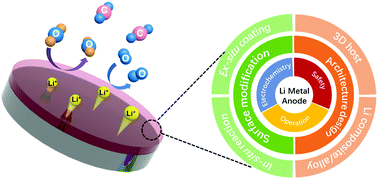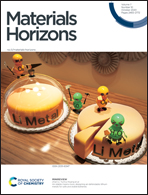Air-stable means more: designing air-defendable lithium metals for safe and stable batteries
Abstract
Lithium (Li) metal has been considered as the ultimate anode choice for the next-generation high energy density rechargeable batteries. However, besides the critical issues in electrochemistry such as interfacial stability and dendrite growth, stringent operation conditions and safety concerns induced by the poor air/moisture stability of Li metal largely hinder its transformation from laboratory to industry. Because of the high reactivity, Li metal suffers from severe corrosion or even potential safety hazards when exposed to humid air. Therefore, recent progress in enhancing the stability of Li metal in ambient air is of great significance for real-world mass production and practical application of lithium metal batteries (LMBs). This review focuses on the development of air-stable and high-performance Li metals to facilitate cost-effective fabrication of safety-enhanced LMBs. Surface modification and architecture design of Li anodes are identified as two most important directions to achieve the goal. The strategies that simultaneously enhance air/water-resistance and electrochemical properties are summarized, and the perspectives and future directions targeting the commercialization of air-stable LMBs are discussed.



 Please wait while we load your content...
Please wait while we load your content...